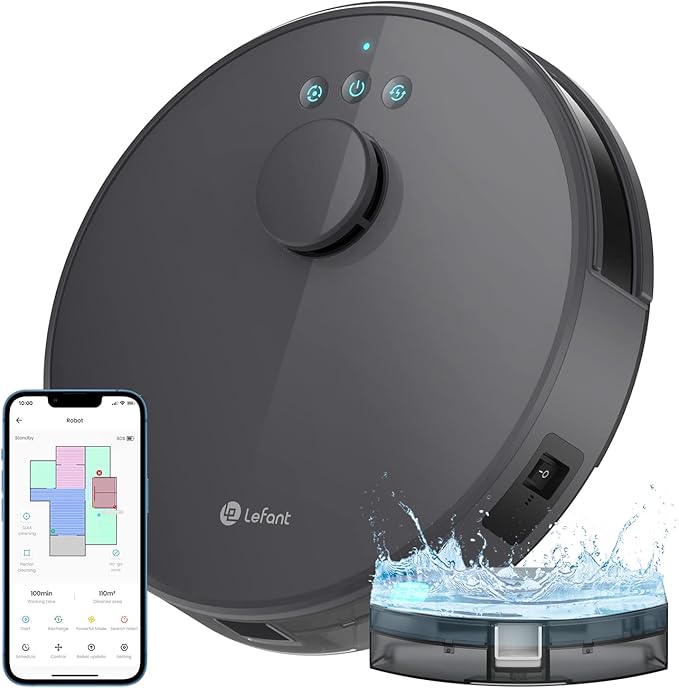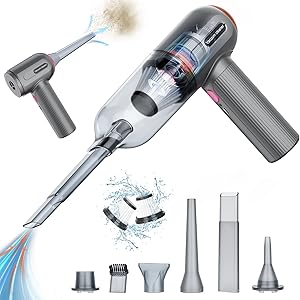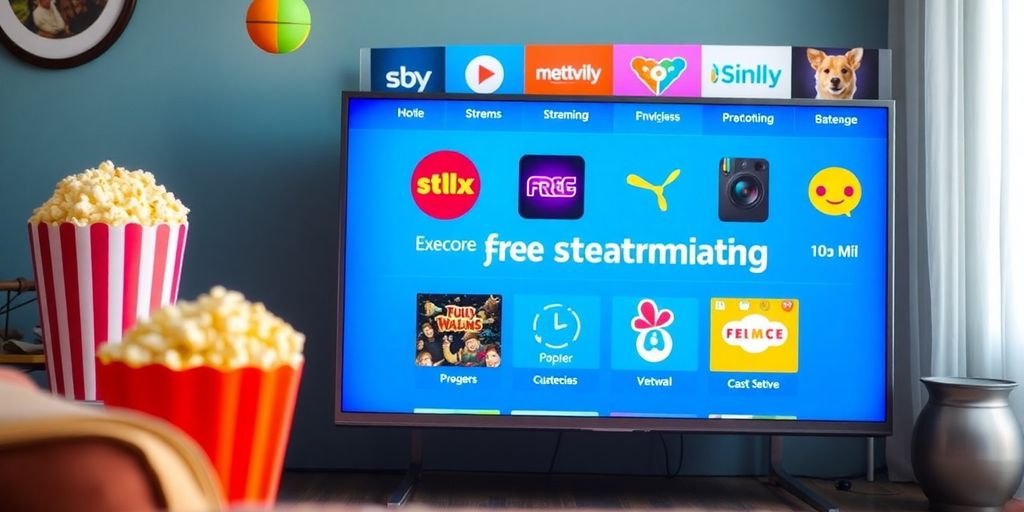As we step into 2025, technology continues to reshape how we work and live. With new tools and innovations emerging, it’s crucial to find ways to maximise efficiency in our daily routines. In this article, we’ll explore ten essential tech hacks that can help streamline your tasks, enhance productivity, and ultimately make your life a bit easier. Whether you’re working from home or in a bustling office, these tips will have you working smarter, not harder.
Key Takeaways
- MultiModal AI can help you make better decisions by combining different types of data.
- Smart home devices can automate everyday tasks, saving you time and effort.
- Cloud storage solutions keep your files accessible and secure from anywhere.
- Virtual collaboration tools make working with teams easier, no matter where they are.
- AI-powered task managers can help you organise your workload more effectively.
1. MultiModal AI
MultiModal AI is getting pretty big; it’s all about using different types of information together to make better decisions. Think about it: instead of just reading text, an AI can now look at images, listen to audio, and even process sensor data all at the same time. This gives a much fuller picture of what’s going on, leading to smarter and faster choices.
How does it actually work? Well, MultiModal AI systems are designed to handle various data types simultaneously:
- Text
- Images
- Audio
- Video
- Sensor data
By combining these, the AI can understand complex situations more completely. For example, in healthcare, it can look at medical images, patient records, and lab results to improve diagnosis accuracy. Some reports say this has improved accuracy by up to 30% in some areas. It also helps with treatment planning, cutting down the time needed to create personalised plans by around 40%.
Businesses can use MultiModal AI to make quicker, better decisions, which can really boost productivity. To get started, identify where different types of data are important for making decisions, invest in the right infrastructure, and train your staff to understand the AI’s insights.
2. Smart Home Devices
Smart home tech isn’t just about fancy gadgets anymore; it’s becoming a real way to boost efficiency. Think about it: lights that adjust automatically, thermostats that learn your schedule, and appliances you can control from your phone. It’s all about making life easier and freeing up your time for more important things.
I’ve been playing around with a few smart devices lately, and honestly, some of them are game-changers. The biggest thing I’ve noticed is how much energy I’m saving. My smart thermostat has learned my routine, and now it automatically adjusts the temperature when I’m not home. It’s a small change, but it adds up over time. Plus, I love being able to turn on the lights before I even get home – especially during these dark evenings.
One thing I’m really excited about is the integration of AI into smart home systems. Imagine a system that not only learns your preferences but also anticipates your needs. For example, it could start brewing your coffee as soon as it detects you’re awake or automatically order groceries when you’re running low. That’s the kind of efficiency I’m talking about!
It’s not all sunshine and roses, though. Setting up some of these devices can be a bit of a pain, and you definitely need to be mindful of security. But overall, I think smart home tech has the potential to make a real difference in how we live and work.
Here are a few ways smart home devices can boost your efficiency:
- Automated routines: Set up routines to automate tasks like turning on lights, adjusting the thermostat, and playing music.
- Remote control: Control your devices from anywhere using your smartphone or tablet.
- Energy savings: Smart thermostats and lighting systems can help you save energy and reduce your bills.
3. Cloud Storage Solutions

Right, let’s talk about cloud storage. Remember the days of USB sticks and emailing files to yourself? Thankfully, those days are fading fast. Cloud storage has become pretty much essential for anyone who wants to keep their data safe and accessible from anywhere. It’s not just about backing up your photos anymore; it’s about streamlining your entire workflow.
Cloud storage solutions are now integral for both personal and professional use.
Think about it: you can start a document on your laptop, continue editing it on your tablet during your commute, and then finalise it on your desktop at home. All without having to worry about transferring files or version control nightmares. Plus, with the rise of remote work, it’s become even more important to have a reliable way to share files with colleagues, no matter where they are in the world.
Cloud storage isn’t just about convenience; it’s also about security. Reputable providers invest heavily in protecting your data from loss, theft, and cyber threats. They use encryption, redundancy, and other advanced security measures to keep your files safe. Of course, it’s still important to choose a provider you trust and to use strong passwords and enable two-factor authentication.
Here’s a quick rundown of some of the benefits:
- Accessibility: Access your files from any device with an internet connection.
- Collaboration: Easily share files and collaborate with others in real-time.
- Security: Protect your data from loss, theft, and cyber threats.
- Scalability: Easily increase your storage space as your needs grow.
Choosing the right cloud storage solution depends on your individual needs and budget. There are plenty of options out there, from free services with limited storage to paid plans with more features and capacity. Do your research and find one that fits your requirements.
4. Virtual Collaboration Tools

Right, so, virtual collaboration tools. We’re not talking about just any old video call here. It’s about creating a digital workspace where teams can actually work together, even when they’re miles apart. Think beyond just seeing each other’s faces; it’s about sharing ideas, documents, and feedback in real-time.
The right tools can make or break a remote team.
It’s not just about the software, though. It’s also about how you use it. Here’s a few things to keep in mind:
- Communication is key: Make sure everyone knows how to use the tools and when to use them. Don’t rely solely on email when a quick message in a team chat would be faster.
- Set expectations: Establish clear guidelines for response times and availability. No one wants to be waiting around for hours for a reply.
- Be mindful of time zones: Scheduling meetings can be a nightmare when people are spread across the globe. Use scheduling tools to find times that work for everyone.
It’s easy to fall into the trap of thinking that virtual collaboration is just a substitute for face-to-face interaction. But it can be so much more than that. With the right tools and strategies, you can create a truly collaborative and productive remote team.
And let’s not forget about the human element. Remote work can be isolating, so it’s important to build in opportunities for social interaction. Virtual coffee breaks, team-building activities, and even just a bit of chit-chat at the start of meetings can go a long way. It’s all about creating a sense of community, even when you’re not in the same room. Effective remote communication is essential for success.
5. AI-Powered Task Managers
Okay, so, remember how task managers used to be just glorified to-do lists? Well, those days are long gone. In 2025, we’re talking about AI-powered systems that practically run your life (or at least your workday). These aren’t just reminders; they’re intelligent assistants that learn your habits, predict your needs, and automate the boring stuff.
Think of it like having a super-organised, slightly bossy, but ultimately helpful digital sidekick. They can juggle deadlines, prioritise tasks, and even suggest the best time to tackle that dreaded spreadsheet. It’s all about working smarter, not harder, right?
These tools are getting seriously clever. They can analyse your work patterns, identify bottlenecks, and even suggest ways to improve your overall productivity. It’s like having a personal productivity consultant, but without the hefty bill.
Here’s a quick look at what these AI task managers can do:
- Smart Scheduling: Automatically adjusts your schedule based on your work patterns and energy levels.
- Contextual Task Recommendations: Suggests the most relevant tasks based on your current context and deadlines.
- Collaborative Intelligence: Facilitates teamwork by understanding team dynamics and optimising collaboration opportunities.
These AI-powered task management tools are designed to make your life easier. They can streamline workflows for both individuals and teams. It’s all about making the most of your time and energy, so you can focus on what really matters. I mean, who wouldn’t want a little extra help in their day?
6. Ergonomic Workstations
Let’s be honest, who wants to spend their days hunched over a desk feeling like a pretzel? Not me, and probably not you either. That’s where ergonomic workstations come in. It’s all about setting up your workspace to fit you, not the other way around.
Think about it: a proper chair, a monitor at the right height, and a keyboard that doesn’t make your wrists scream. It might seem like a small thing, but trust me, your body will thank you in the long run. Investing in an ergonomic setup is investing in your health and productivity.
A well-designed ergonomic workstation isn’t just about comfort; it’s about preventing long-term health issues like carpal tunnel syndrome and back pain. It’s a proactive approach to well-being in the workplace.
Here are a few things to consider:
- Chair: Adjustable height, lumbar support, and comfortable padding are key.
- Monitor: Position it at arm’s length and at eye level to avoid neck strain.
- Keyboard and Mouse: Choose ergonomic designs that support your wrists and hands.
- Desk: Consider a standing desk or a desk converter to alternate between sitting and standing.
And don’t forget about lighting! Good office lighting is crucial for reducing eye strain and headaches. Try to maximise natural light if you can, and supplement with task lighting as needed. It’s all about creating a workspace that supports your body and mind, so you can focus on what matters most: getting the job done.
7. Noise-Cancelling Headphones
Right, let’s talk about noise-cancelling headphones. If you’re trying to get anything done in a busy office, a chaotic home, or even just on the train, these things are a lifesaver. It’s not just about blocking out sound; it’s about creating a bubble of calm so you can actually focus. I remember trying to work from a coffee shop once without them – absolute madness. People chatting, coffee machines hissing, music blaring… I got nothing done.
Investing in a good pair of noise-cancelling headphones is like investing in your own sanity.
There are loads of options out there, from the big over-ear ones to the smaller earbuds. It really depends on what you’re after. Battery life is a big one, especially if you’re planning on using them all day. Comfort is also key – you don’t want something that’s going to pinch or get uncomfortable after an hour or two. And of course, sound quality matters too. You want something that sounds good when you’re actually listening to music or podcasts, not just something that blocks out noise. The Bose QuietComfort Ultra Headphones Wireless are a great option.
I’ve found that using noise-cancelling headphones isn’t just about blocking out distractions. It’s also about signalling to others that you’re in ‘focus mode’. People are less likely to interrupt you if you’ve got headphones on, which can be a real game-changer when you’re trying to concentrate.
Here are a few things to consider when you’re choosing a pair:
- Comfort: Can you wear them for hours without discomfort?
- Battery Life: How long do they last on a single charge?
- Noise Cancellation: How effective is the noise cancellation in different environments?
- Sound Quality: How good do they sound when playing music or podcasts?
8. Digital Note-Taking Apps
Okay, so ditching paper might feel weird at first, but trust me, going digital with your notes is a game-changer. I used to be all about the Moleskine, but now? I can’t imagine going back. The ability to search, organise, and access your notes from anywhere is just too good to pass up.
There are loads of apps out there, from the super simple to the incredibly complex. It really depends on what you need. I’ve tried a bunch, and here’s what I’ve found:
- Evernote: Still a solid choice, even if it’s not the new kid on the block anymore. Great for clipping web articles and organising research.
- Notion: This is the one I’m currently using. It’s like a digital workspace where you can manage projects, take notes, and even build simple databases. It’s a bit of a learning curve, but worth it.
- OneNote: If you’re already in the Microsoft ecosystem, this is a no-brainer. It’s free, works well across devices, and has decent collaboration features.
- Bear: Mac and iOS only, but it’s a beautiful, distraction-free writing app. Perfect if you just want to focus on getting words down.
The best thing about digital note-taking is that you can easily share your notes with others, collaborate in real-time, and never have to worry about losing that important piece of paper again. Plus, think of all the trees you’ll save!
I’ve found that using a digital note-taking app has seriously boosted my productivity. No more messy notebooks or frantically searching for that one scrap of paper with the important information. Everything is organised, searchable, and always at my fingertips. Give it a go – you might be surprised how much you like it.
9. Automation Software
Right, let’s talk about automation software. It’s not just about making things easier; it’s about fundamentally changing how we work. Think about all those repetitive tasks that eat into your day – the ones that make you think, "There has to be a better way!" Well, automation software is often that better way. It’s about streamlining processes and freeing up your time for more important things.
Automation software can be a game-changer, but it’s important to choose the right tools and implement them effectively. Don’t just automate for the sake of it; think about what will actually make a difference to your productivity.
Consider these points:
- Task Automation: Automate repetitive tasks like data entry, email filtering, and report generation. This frees up employees to focus on more strategic work.
- Workflow Automation: Design automated workflows for processes like onboarding new employees, processing invoices, or managing customer support tickets. Workflow automation software can really help.
- Integration: Ensure your automation software integrates with your existing systems, such as CRM, ERP, and project management tools. This creates a seamless flow of information and avoids data silos.
It’s not a magic bullet, but with a bit of planning, automation software can seriously boost your efficiency.
10. Time Tracking Tools
Okay, so it’s 2025, and if you’re still guessing where your time goes, you’re doing it wrong. Time tracking tools have evolved way beyond just clocking in and out. They’re now sophisticated systems that can seriously boost your productivity.
These tools provide insights into how you spend your time, helping you identify time-wasting activities and optimise your workflow.
Think of it like this:
- You can see exactly how long you spend on each project.
- You can identify your most productive times of day.
- You can get a handle on those sneaky distractions that eat into your day.
Using time tracking tools isn’t just about micromanaging yourself; it’s about understanding your work patterns and making informed decisions about how you allocate your time. It’s about working smarter, not harder.
There are loads of options out there, from simple apps to comprehensive software suites. The key is to find one that fits your needs and integrates well with your existing workflow. For example, you could use project time tracking software to see how long each task takes.
Final Thoughts
In wrapping things up, these ten tech hacks can really help you get more done in 2025. It’s all about finding what works best for you and making the most of the tools at your disposal. Whether it’s streamlining your workflow or cutting out distractions, every little change can add up. So, give these tips a go and see how they fit into your routine. You might just find that a few simple tweaks can make a big difference in your day-to-day life.
Frequently Asked Questions
What is MultiModal AI?
MultiModal AI is a type of artificial intelligence that uses different types of data, like text, images, and sounds, to make better decisions.
How can smart home devices improve my daily life?
Smart home devices can help you save time and energy by automating tasks like turning off lights or adjusting the thermostat.
Why should I use cloud storage solutions?
Cloud storage lets you save your files online, so you can access them from anywhere and avoid losing them if your computer breaks.
What are virtual collaboration tools?
Virtual collaboration tools are apps that help teams work together online, making it easier to share ideas and complete projects.
How do AI-powered task managers work?
AI-powered task managers use smart technology to help you organise your tasks and remind you of deadlines, making it easier to stay on track.
What are the benefits of using noise-cancelling headphones?
Noise-cancelling headphones block out background sounds, helping you focus better whether you’re working or relaxing.






